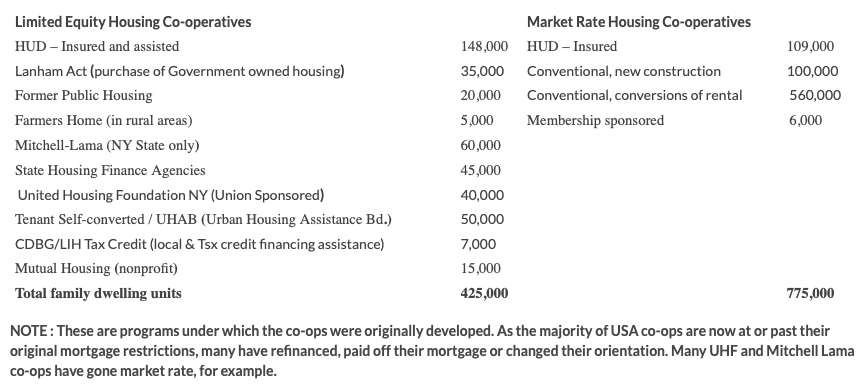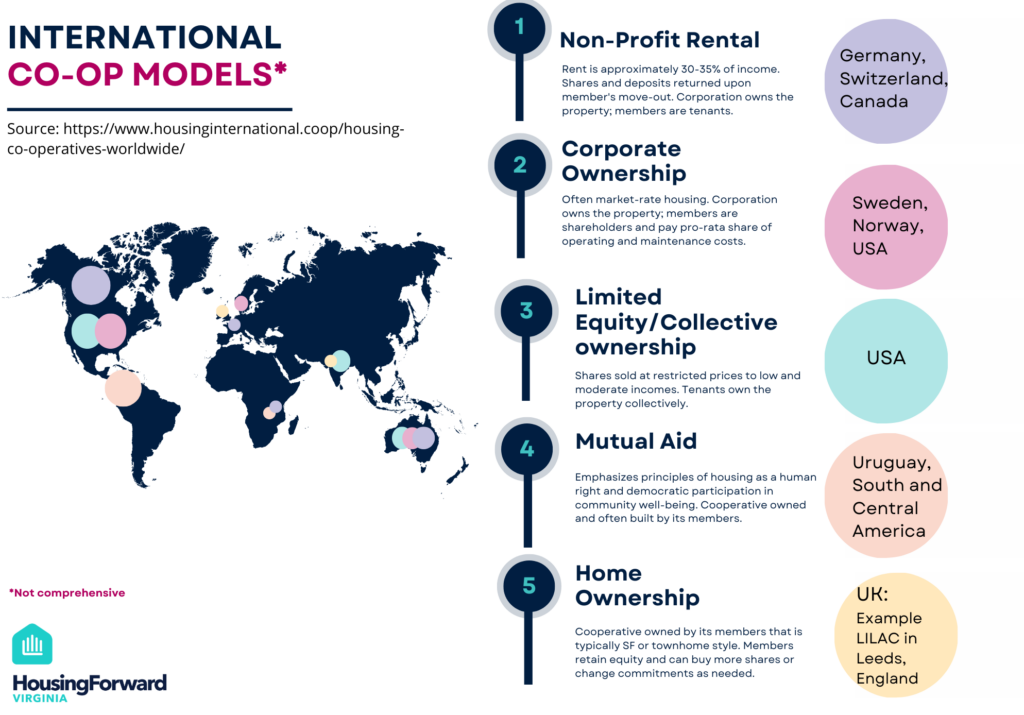Chemin du Château-Sec 37, a cooperative housing community in Moudon, Switzerland. Photo via cohabitat.io.
The FWD #B16 • 806 Words
Guest co-author: Sam Gray, Esq. (Sam Gray Law, P.C.). Sam is an attorney and housing advocate in Richmond, with previous experience practicing residential and commercial real estate law in New York City.
Co-operator, could you help me build this home?
In the first part of our Back to Basics installment on cooperative housing, or co-ops, we discussed the core values of co-ops: shared ownership, shared responsibilities, and shared decision-making. We outlined the major differences between co-ops and co-housing (often incorrectly conflated), financing barriers, and potential social benefits of this model.
Here in Part 2, we’ll dive into more of the details of this housing type and look at successful examples in practice.
Case studies and success stories
In New York, cooperatives provide New Yorkers with an affordable path towards homeownership. According to reports by the real estate appraisal firm Miller Samuel, average monthly ownership costs for a condominium are around 50% higher than a cooperative unit, while the average price of a condominium is more than double that of one in a cooperative.
This is due to a number of factors. Cooperatives tend to be older housing stock, while condominiums tend to be newer housing marketed to higher earners. Many cooperatives were also developed under affordable housing programs such as New York’s Mitchell-Lama Program, which adopts a limited equity model of homeownership that favors continued affordability over real estate speculation.
Examples of these include Co-op City in the Bronx, which is the largest residential development in the United States, and Manhattan Plaza, which established the Manhattan Plaza AIDS Project, a groundbreaking mutual-aid and social services program. It was also home to such notable New Yorkers as Angela Lansbury, Charles Mingus, Tennessee Williams, Alicia Keys, and Larry David.
While New York City can claim half of all co-ops in the United States, many others can be found in Chicago, Atlanta, Detroit, Miami, Kansas City, Washington, and San Francisco. In fact, the majority of housing cooperatives in the United States are either townhouses or garden-style apartment buildings, not mid-rise or high-rise multi-family structures. On a smaller scale, cooperative communities with modular and mobile homes are not uncommon in warmer climates like Florida and California.
Financing and legal frameworks
Housing cooperatives in the United States emerged in two distinct ways: limited equity and market rate. For each type, there are a variety of financing structures, as shown in the table below from Cooperative Housing International:

Organizations such as the Urban Homesteading Assistance Board (UHAB) have helped tenants organize to buy and convert their buildings into Housing Development Fund Corporations (HDFCs). These structures are designed to be permanently affordable and owned cooperatively. Other advocacy groups, such as the East Bay Permanent Real Estate Cooperative, provide novel fundraising mechanisms that promote community ownership and permanent affordability.
Comparative analysis
Although the United States has primarily explored limited-equity and market-rate cooperative housing, other models exist throughout the world. The infographic below shows where you can find nonprofit, mutual aid, and homeownership models across the globe.

The unique structure and governance of cooperatives also offers opportunities for holistic community development planning.
Partnerships with community organizations
Collaborative initiatives
Cooperative housing developers can collaborate with community-based organizations to address social and environmental challenges and promote equitable development. By partnering with local nonprofits, advocacy groups, and government agencies, cooperative housing projects can leverage resources and expertise to support underserved communities.
These collaborations can address pressing issues such as affordable housing, homelessness, and environmental sustainability. Community organizations can provide support services and resources to residents, such as educational programs, healthcare services, and social services.
Community engagement
Partnerships with community organizations facilitate meaningful community engagement and participatory decision-making processes. By involving residents and stakeholders in planning and development efforts, cooperative housing projects can ensure their initiatives are responsive to the needs of the local community.
Adaptive strategies
Aging in place initiatives
As the population ages, there is a growing need for housing options that support aging in place and enable older adults to maintain independence and quality of life. Cooperative housing can adapt to this trend by implementing age-friendly design features, providing supportive services such as home healthcare and transportation assistance, and fostering social connections and mutual support among residents.
Affordable housing for essential workers
Cooperative housing can also play a crucial role in addressing the housing needs of essential workers such as healthcare professionals, teachers, and service workers. By offering affordable housing options in close proximity to employment centers and essential services, cooperative housing projects can support workforce retention, reduce commuting costs and carbon emissions, and promote economic stability and resilience in communities.
Emerging trends such as mixed-use developments, partnerships with community organizations, and adaptive strategies offer exciting opportunities for cooperative housing to evolve and thrive in the 21st century. By embracing innovation, collaboration, and flexibility, cooperative housing projects can create sustainable, inclusive, and resilient communities that meet the diverse needs and aspirations of residents.
As the affordable housing crisis is opening conversations around missing forms of housing, cooperative housing can be considered a viable alternative to traditional homeownership models.
